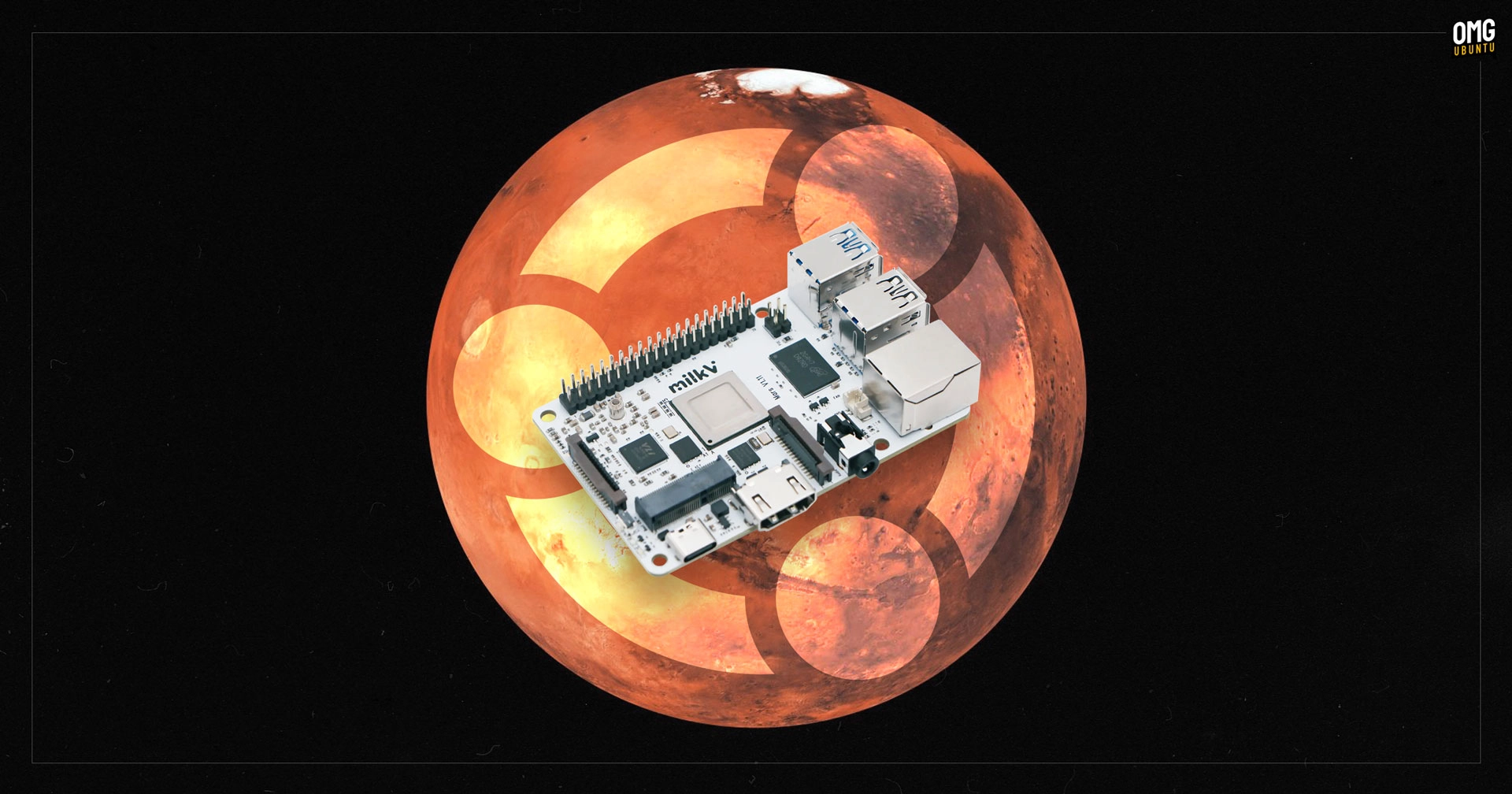Ubuntu 24.04 is now available for the Milk-V Mars RISC-V single board computer (SBC).
RISC-V is an open-source processor specification, permitting any individual to access its blueprint to develop their unique chips without needing to pay any licensing fees or royalties. Its resemblance to a Linux distro allows for collaboration, contribution, and enhancement of RISC-V consistently.
Though both ARM (you’ve probably heard about it) and RISC-V come under the RISC (Reduced Instruction Set Computer) division, RISC-V boasts of a distinctive, module-based architecture. Its base instruction set is expandable, opening up possibilities for it being customized or optimized for varied tasks.
Looking at these open-source reciprocities, it’s no wonder that Linux support for RISC-V is currently in an excellent position and progressing with each subsequent Linux kernel release.
The release of affordable yet capable RISC-V computers like the Milk-V Mars will help broaden the appeal and use-cases for the tech, helping it land in the hands of resourceful hardware hackers, enthusiasts, and engineers who can unlock its potential.
And thanks to a new partnership with MilkV, the makers of the Milk-V Mars SBC, Ubuntu is to become reference OS for the company’s new RISC-V products — a smart team-up since Ubuntu already runs on a number of other RISC-V devices.
Milk-V Mars – a RISC-V Pocket Rocket
Milk-V is a Raspberry Pi-sized RISC-V computer
Despite its credit card-sized dimensions, the Milk-V Mars carries a significant amount of power. It contains a 64-bit StarFive JH7110 processor with a quad-core topping out at 1.5GHz (RV64GC), an Imagination BXE-4-32 GPU compatible with OpenCL 1.2, OpenGL ES 3.2, Vulkan 1.2, and a maximum of 8GB LPDDR4 RAM.
The device’s integrated video processing unit has the ability to process H.264 & H.265 in 4Kp60 resolution decoding, as well as H.265 and 1080p30 encoding. It can also handle JPEG encoding/decoding tasks.
Though it lacks built-in storage, with the exception of a writable boot ROM, it does provide an eMMC module slot and a slot for microSD cards. It also offers an M.2 E-Key slot for Bluetooth & Wi-Fi units, four USB portals, an HDMI 2.0 outlet, a 40-pin GPIO, and an RJ45 ethernet (PoE is accessible via an optional HAT).
The Ubuntu 24.04 Server architecture lays the foundation for the device.
Ubuntu is regarded as one of the most classical and well-loved operating systems. Additionally, Milk-V Mars is a superior SBC product that developers favor due to its integration of a high-performance GPU and a wealth of interfaces, according to Vice President of Shenzhen MilkV Technology Co., Ltd., Ke Yiran.
Working with Canonical to provide an optimised Ubuntu on Milk-V Mars fills us with excitement. This collaboration will speed up innovation and decrease the time to market for developers,” he added.
You can discover more about the ‘strategic cooperation agreement’ between these companies on Canonical’s blog.
Those who are already in possession of a Milk-V Mars can procure an Ubuntu 24.04 server image from the Ubuntu RISC-V downloads page. This page also features links for further information if needed.
It is possible to install a GUI desktop on an Ubuntu Server image. This implies that you could potentially use a RISC-V as a desktop PC. However, the software experience and hardware performance are not quite ready yet. The onboard GPU in this SBC is not supported in Ubuntu.
The more RISC-V devices that become available, the faster progress will be made. Keep an eye on this space!
